.jpg)
1997 Boxster
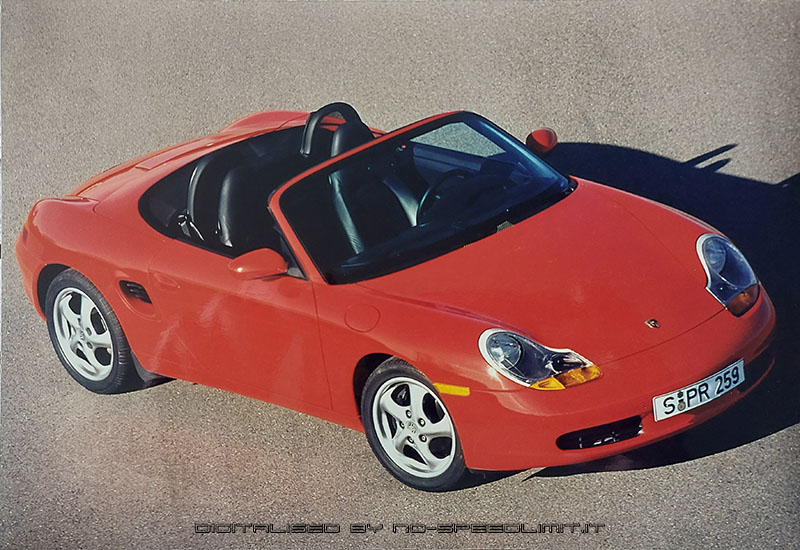
Since its launch in the fall of 1996, the Porsche Boxster has received excellent reviews and exceeded all sales expectations.
The technical concept of the Boxster incorporates the mid-engine design, which has a long tradition at Porsche. Even the first prototype, the 356/1, built in Gmünd, Austria, had a mid-engine. The most successful Porsche of the early years, the Spyder 550, followed the same principle on which all successful racing cars are designed today.
With the Boxster, Porsche demonstrates that the mid-engine concept can also be excellently applied to everyday sports cars. The Boxster's two trunks, with 260 liters of capacity, have more volume than any roadster in this class.
When developing the soft top, the engineers placed the highest priority on low wind noise. A unique feature is the time of just twelve seconds in which the roof can be electrically opened or closed using a toggle switch. For safety reasons, this mechanism only works when the handbrake is engaged while the car is stationary. The roof's special sealing and drainage system prevents any moisture penetration.
For the Boxster's fully galvanized body, Porsche designers, who have extensive experience with aluminum and plastic from racing, chose traditional sheet steel. Without neglecting the goal of lightweight construction, steel guarantees favorable deformation values in a crash and easy repairs.
The standard interior displays the typical Porsche features in a contemporary, rejuvenated style, which naturally includes two airbags. The ignition lock is located to the left of the steering wheel, in keeping with tradition. The dashboard, with three central instrument clusters, is compact without denying the Porsche style. The Boxster is particularly precise about speed – it is displayed in both analog and digital formats.
Two seat types – both with electric backrest adjustment – are available: the sporty and comfortable standard seat and the sports seat with reinforced lateral support.
The Boxster's engine is a completely new design. In keeping with Porsche's tradition, it is a six-cylinder boxer engine. This classic theme has been adapted to the demands of our time: water cooling and four-valve technology, which were perfected in racing on the 911 GT1, help reduce fuel consumption and keep pollutant emissions low in the production car. The power output is exemplary, with 150 kW (204 hp) at 6,000 rpm and a displacement of 2.5 liters.
Maximum torque of 245 Newton meters is reached at 4,500 rpm, with more than 200 Newton meters available between 1,750 and 6,500 rpm.
Porsche designers achieved several highlights in the design of the six-cylinder boxer engine. The cooling water flow follows the model of racing engines, following the cross-flow principle that keeps all cylinders and combustion chambers at the same temperature. The flow of cooling water around the cylinders and through the cylinder heads is separated.
The crankshaft and the auxiliary shafts driving the camshafts are surrounded by a composite bearing bridge made of aluminum/gray cast iron. This hard core in the two-part light-alloy housing ensures constant bearing clearance even under changing temperatures. Furthermore, its vibration-damping effect reduces the mechanical noise of the engine. Valve actuation is via four overhead camshafts and bucket tappets with hydraulic lash adjustment. The opening times of the intake camshafts are variable by actuators in the drive chains (Porsche patent Variocam). The entire valve train is maintenance-free thanks to automatic chain tensioners and hydraulic lash adjustment.
Injection and ignition are controlled by a Bosch Motronic M 5.2. Fuel is supplied sequentially via one nozzle per cylinder, i.e., in the rhythm of the ignition sequence. The fuel quantity per power stroke is measured using a hot-film air mass meter in the intake tract and lambda sensors with particularly precise stereo control.
The ignition system is fully electronic; it operates without mechanical ignition distribution, using a so-called static distribution across six individual ignition coils. To adapt to fuel qualities lower than Super Plus with 98 RON, the ignition electronics feature cylinder-selective knock control. This reduces the ignition timing of individual knocking cylinders if necessary.
The Boxster Motronic is complemented by onboard diagnostics. This continuously checks all exhaust-relevant components for possible faults.
For the power transmission, Boxster buyers can choose between a five-speed manual transmission and (at an additional cost) an intelligent five-speed automatic transmission, similar to the one used in the new 911. The Boxster's Tiptronic S is characterized, among other things, by its ease of use. In automatic mode, the selector lever only has the positions "P, R, N, and D." If the lever is moved from the right-hand automatic gate to the left into its manual shifting position, gear selection is generally performed using the touch buttons on the steering wheel.
The automatic transmission orients itself to the driver's power requirements when shifting gears and selects the most suitable program for the respective driving situation from the five programs stored in the control unit. When quickly releasing the accelerator or braking, for example, the automatic transmission recognizes the driver's intention to decelerate and consequently shifts down rather than up. The torque converter lockup now operates in a controlled manner from second gear onwards, according to a program that takes driving experience into account.
The Boxster's chassis features state-of-the-art aluminum wheel guidance elements. Consistently applying the shared-parts concept, two axle designs based on the McPherson principle resulted in an economical and space-saving solution.
Porsche engineers achieved a high degree of driving safety at the limit through elastokinematic corrections of the toe-in values when cornering on the front and rear axles. Negative toe-in at the front and positive toe-in at the rear result in increasing understeer with increasing lateral acceleration, which brakes the Boxster effortlessly.
The rack-and-pinion steering is hydraulically assisted. Its design was chosen to guarantee safe straight-line stability at high speeds and agile turn-in behavior during extreme cornering.
The braking system features pure racing technology of the latest design. Like the 911, the Boxster uses light-alloy four-piston monobloc brake calipers. The one-piece calipers with particularly high dimensional rigidity are also used in the 600 hp 911 GT 1 super sports car and in Formula 1. The brake discs are internally ventilated at the front and rear. The standard anti-lock braking system (ABS 5) is state-of-the-art.
Two additional upgrade packages allow customers to customize the Boxster's interior.
The "Trend" equipment package adds subtle color accents to the interior with the color graffiti gray anthracite.
The Trend Boxster is available exclusively in the exterior colors zenith blue metallic and liberty turquoise metallic. The soft top is graffiti gray, the seats are covered in the trendy graffiti gray/anthracite fabric, and the steering wheel, handbrake lever, door handles, and gearshift knob are finished in black leather. The dashboard, door panels, center console cover, instrument panel cover, and airbag cover are covered with a new graffiti gray film. The instrument bezels, the A-pillar trim, the door tubes, the roll bar, and the gearshift knob insert (release button with Tiptronic) are painted in the body color.
The 'Sport Design' package brings the color metallic gray to the interior. It includes the lower section of the instrument cluster, the instrument rings, the shade covers, the center air vent, the seat shells, the seat switch covers, the seat fittings (outside), the left and right door tubes, the cover in front of the door opener, the door storage compartment lids, and the gearshift knob insert.
The driver turns a new 3-spoke airbag steering wheel in black leather; the sports seats are also covered in black leather, as are the handbrake lever handle, gear knob, passenger airbag cover, roll bar trim, center console ceiling, and instrument panel. The side panels of the front center console, the dashboard, and the door panels are covered in black diamond-pattern film.
The interior of the front center console, the dashboard, and the door panels are covered in black diamond-pattern film.
An additionally available 'Sport Technik' package includes traction control, firmer spring, shock absorber, and stabilizer settings, lowered suspension, and 17 J-shaped wheels in size 205/50 ZR 17 (front) and 255/40 ZR 17 (rear).
Side airbags are available as an option for the Boxster to further increase passive safety.
Seats with electric adjustment and memory settings are also available for the Boxster, as is the case with the 911.
Porsche Communication Management is also available for the Boxster: This unit combines the controls for the radio, air conditioning, mobile phone, onboard computer, and navigation system in the center of the dashboard. A parking aid with four distance sensors in the rear panel is available as an optional extra for frequent city drivers.
A new three-spoke steering wheel is available as a sporty alternative to the standard steering wheel, also with Tiptronic S buttons and, of course, with airbag.
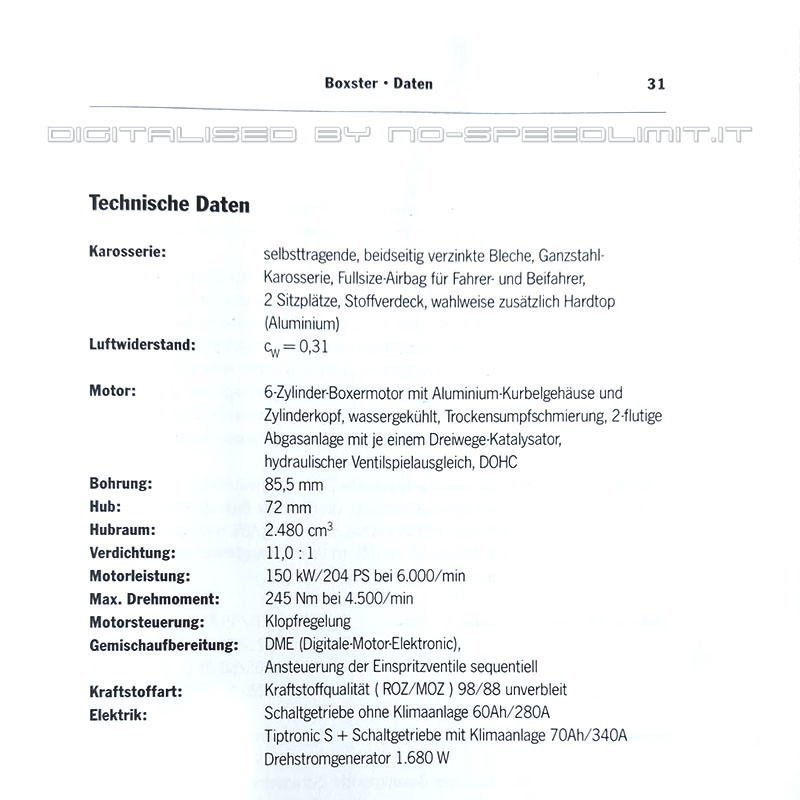
.jpg)
1997 Boxster
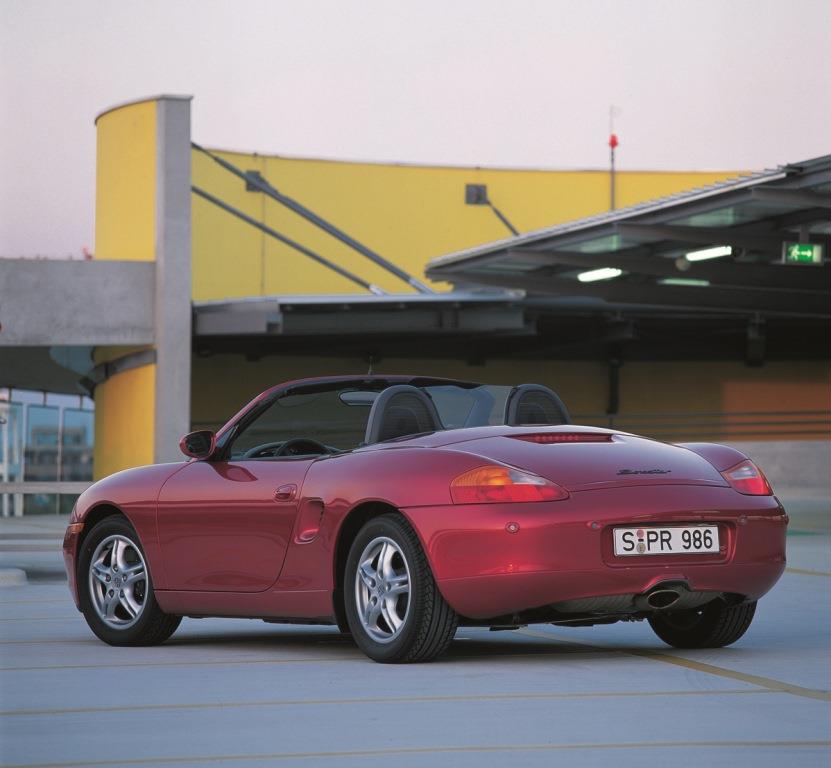
1999 Geneva - Boxster
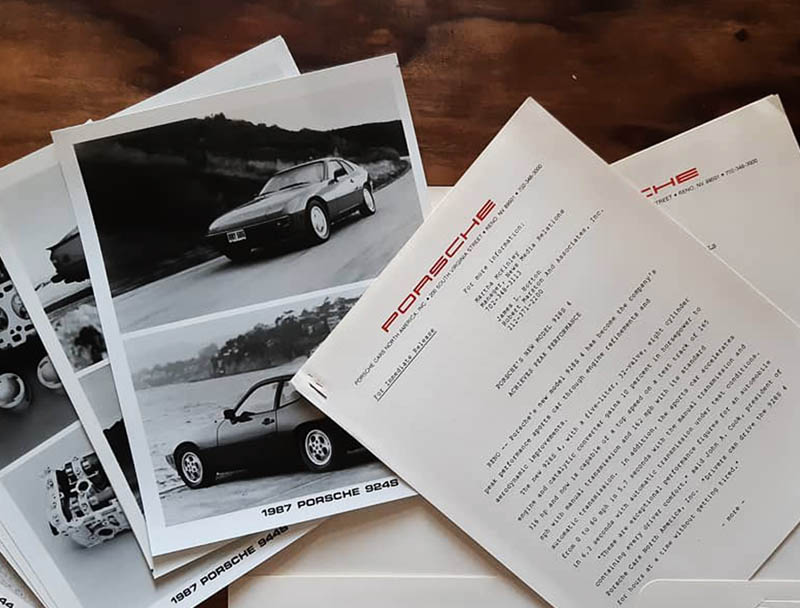
Porsche Press kit
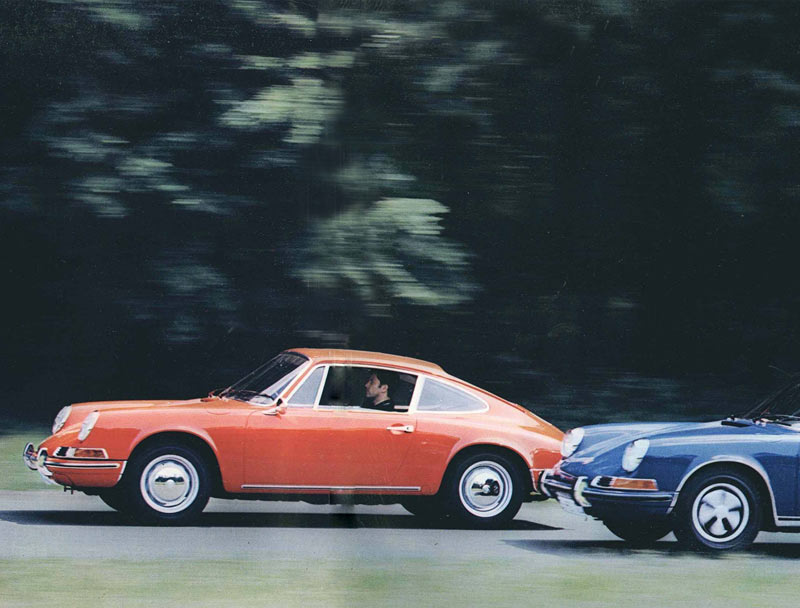
Porsche Literature
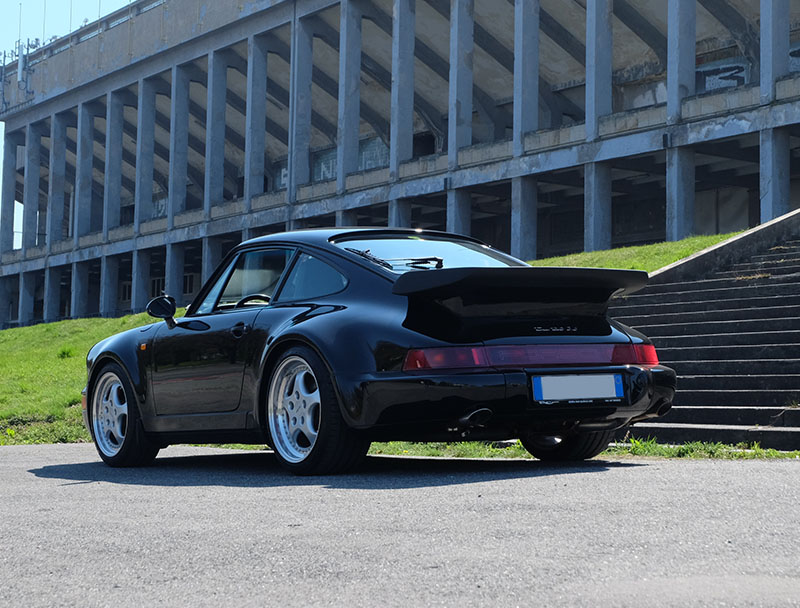
Our Porsche Cars